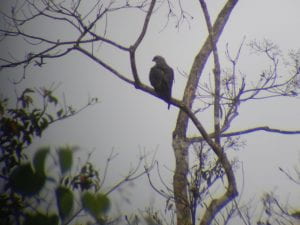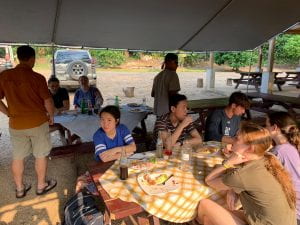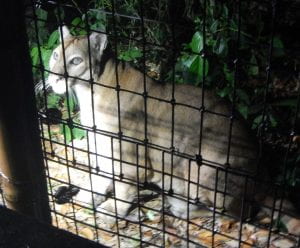The ATM cave was literally one of the coolest things I’ve ever done! It will be difficult to even describe what we just did since it was so unique and we couldn’t take any pictures, but seriously, if any future TFBs are reading this post, this travel day absolutely will not disappoint.
The entrance to the cave looks like a mermaid’s lagoon-just this beautiful stone arch shrouded in the natural flora of Belize with crystal waters gushing out of the inner cave. When we entered, I could hardly believe my eyes it was so magical. The cave ceiling was so high and the conditions inside the cave were so pleasant it barely felt real. As we traversed deeper into the cave, my fascination only continued to grow. We made our way though narrow passages and natural springs of water while learning about the ancient Maya people and their beliefs surrounding the cave. I 100% understand why they would have thought this cave had some deep connection to spirituality and specifically the underworld, especially knowing that all of their rituals in the cave involved some form of drugs and alcohol.
When we got to the largest room in the cave, our guide explained what researchers believed about the Maya remains we could observe. All of the pottery they left behind had serious meaning and I saw the reflections on the cave walls that they believed to be their gods. If all of this were not already crazy enough, seeing the full human skeleton in the cave certainly pushed the experience over the edge. At the time when the Maya were using the ATM cave, they were living through a mini ice-age when there was no rain for their crops. So, they started making human sacrificed to appease their gods out of desperation. They first started with adult sacrifices, then teenagers, then children, and finally infants when nothing worked. It was very grounding to learn about what lengths people will go to in times of absolute despair.
When we made our way out of the cave, we had to pass through some extremely narrow, tight spots, which honestly made me a bit nervous at times. Even though I knew that I was safe the entire time, sliding down some of the rocks and squeezing through those spaces was unsettling. It made a lot of sense to me why only a few Maya would enter the cave at a time. Besides it being a sacred ritual that only a few were aloud to partake in, it would be extremely stressful to go through that cave with no modern safety measures and a village including young children and elderly.
Tonight we made it to the Belize Zoo and got a personal tour after sunset. It was really awesome to see jaguars, puma, margay, and a Belizean porcupine up close. I’ve seen a few cockroaches around the premises including one green cockroach (panchlora nivea) flying around a source of light and two oriental cockroaches in the shower. I also may have seen a smoky-brown cockroach scurrying around near the bathroom sink.
-Emily

























